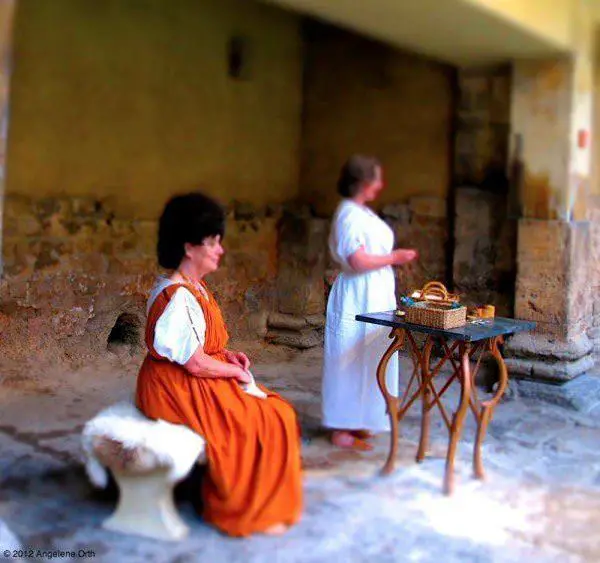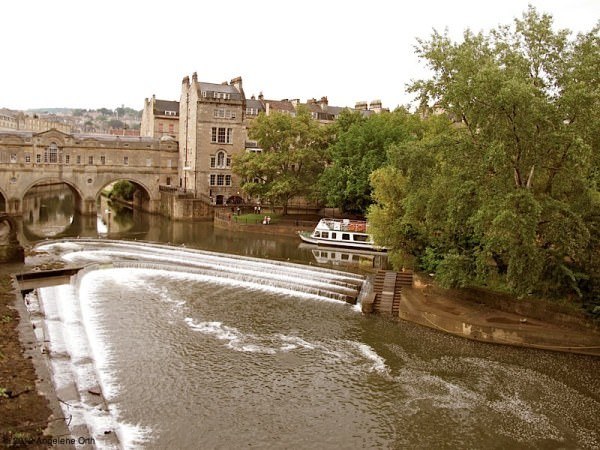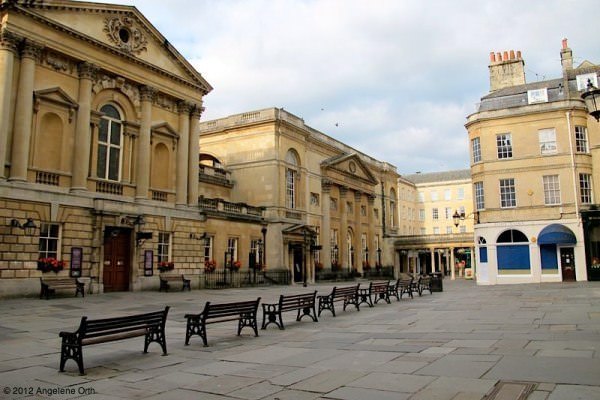Taking the waters in Bath
Just 97 miles west of London lies historic Bath and its mysterious, steamy mineral springs. Fortunately you won’t need a time machine to see much of this town as it was in both Roman times and aristocratic Georgian England, but you might want to bring your wallet — Bath is the perfect spot to splash out on a luxurious day at the spa.
Roman Bath
A visit to Bath of the past must include a trip to the Roman site that originally made this location a hotspot of western England. The Romans were the first to establish Bath as a town in 43 AD, naming it Aquae Sulis for its hot springs (the only known hot springs in Britain!) and its connection to the goddess Sulis.
The original baths are now a UNESCO World Heritage site and are found about 20 feet below modern street level. The Romans built a gorgeous temple and spa complex that flows and steams with natural spring water to this very day, though you’ll have to wander down the street a bit to actually bathe in the thermal waters yourself.

There are four main attractions within the Roman spa complex — the Sacred Spring, the Roman Temple, the Roman bath house and a collection of artifacts found in the Roman Bath – and you can see much of the unearthed archaeological area with a basic entrance ticket. Audioguides in multiple languages are included in the cost. Costumed characters wander the extensive ruins, giving a glimpse of what life would have looked like 2,000 years ago.
The Georgian era
Fast-forward several centuries, past many kings and queens and plenty of upheaval. The Roman Empire had come to an end and Bath experienced a revival as England’s centre for socialization, aristocratic parties and health. The center of Bath society in Georgian times was the Pump Room above the springs, where author Jane Austen and her cohorts would have danced and gossiped.

Today the Pump Room is a restaurant, so Janeites can have tea just as their literary heroines would have in the 18th century. The Pump Room is also the only place to sample the water from the spring. The spring water contains more than 42 different minerals, in particular sulphate, calcium and chloride, which are said to improve health. More than a million litres of this special water flow from the springs every day. While you may feel healthier after sipping the spring water, the mineral-rich taste leaves something to be desired!
Modern baths
To fully experience Bath, you must not only visit the ancient spas of the past, but get into the modern ones yourself! Just a few steps from the ancient Roman Baths and magnificent Georgian Pump Room, you’ll find Thermae Bath Spa, a multimillion-dollar, ultra-modern facility that opened with much fanfare in 2006. Thermae is Britain’s only natural thermal spa, and a personal experience of the warm, mineral-rich waters which the Celts and Romans discovered so many years ago is well worth a splurge.

The spa merges historic buildings with contemporary design, so it feels like a step back in history while losing none of the comforts of the modern spa experience. Four aromatherapy steam rooms infused with eucalyptus, frankincense and other essential oils; an extensive menu of spa treatments including Watsu, massage and Vichy showers; and an open-air rooftop pool with priceless views of Bath’s historic skyline make the fresh embodiment of Roman and Georgian customs. Spa deals and packages are available for a variety of treatments, and appointments are recommended though not always necessary.
If you want to experience your own bit of history, don’t miss Bath and its ancient and modern spas!







